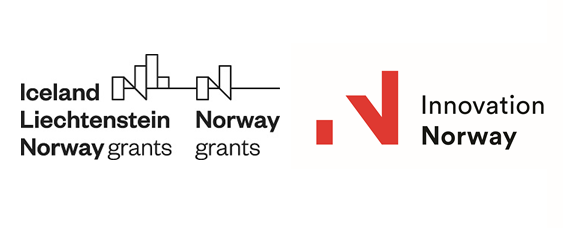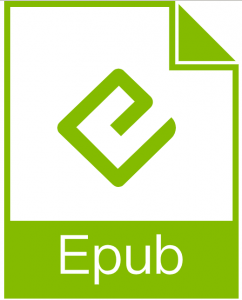We are honored to be featured in the episode of The Regtech Show, ran by Fintech Finance, alongside the amazing Birte Quitt, Erste Group’s Head of Group Retail Strategy. She tells the story of George and how incredibly successful is has been since its launch in Romania.
Erste Romania is one of the largest banks on the local market and also one of Allevo’s most valued customers (since 2003). They are one of the leading banks in terms of innovation, compliance and appetite for new solutions. And they do have an amazing team we are lucky to have worked with over the years. A special shout goes to the behind the scenes people that make everything work and that are not visible to the larger public. You know who you are and we appreciate you!
An excerpt of what we say:
Ioana Guiman, Managing Partner Allevo:
Open Banking is something brilliant that has happened to these industry. We have been advocating for a very long time for more transparency in banking. We have been actively promoting open source technologies for the banking industry. And everything we have developed has been based on principles of open source. So open banking in particular comes in to bring communication between players, be they peers, partners or competitors. What banks are doing is that they build a layer of APIs that sits on top of existing infrastructures that enables them to talk to one another. It’s one of the first steps to solve one of the core issues we found as a recurring issue in this industry, which is the need for interoperability. Banks have added during time a lot of systems that became slightly deprecated, legacy systems, in their environments, and they are understandably reluctant to change them. So the need to pull out data and use these systems in an effective way is there. Open Banking comes in to solve the top layer of this issue, unlocking the ability to talk to these systems.
About Erste’s George innovation:
It’s been quite intense. Initially people have been, as it happens, very reluctant with the change, because they needed to update the mobile apps, the interface used even at ATMs or at the bank. George is the new face of Erste. People have initially been reluctant; the older, the more reluctant. We are now at a point where it works well and people have been trying to train themselves of how to use it. It’s useful in two ways: it’s useful for the bank, that it has a more effective communication channel with their customers that can be used to deliver more service to people. They are now able to bring in new digital services through that channel. It’s a form of digital financial education, by force, but to the benefit of everyone.
Financial inclusion and financial uptake in RO:
The rate of financial inclusion in Romania stays very very low. It was reported to be around 60% in 2017 by the National Bank, but it’s actually even lower, because there are a lot of dormant accounts. The type of accounts your employer opens for you, but you never use, you only use them to cash out. Famous examples like MPESA that worked wonders in Kenya for example have been deployed in Romania and they failed, they just failed. I think on the local market you need to find the right balance between delivering financial education to people who need financial services and making sure you have the correct business model and you make your money from those who can pay. Because we see a lot of examples of youngsters who use alternative banking, let’s just call it that. Banks are not too happy with the increased use of Revolut types of services. There needs to be a mix of education and of giving them a tool that does just what they need to do: send money to people that work abroad, receive money from their family, do easy conversion or cash out when they need to.
About the fintech ecosystem in Romania:
Fintechs and banks are not in a fight, so it’s not like a comic book story where there are villains and good guys, fighting against one another. An interesting thing is that the fintechs that are active on the Romanian market are the fintechs that are active in the European Union. So any fintech that is passported to offer services in any other country, like France or Germany, can offer the same service in Romania. Whereas banks present on the Romanian market are not all banks in the European Union.
Andrei Berghian, Strategic Solutions Development at Allevo:
We are right now in the middle of creating some new financial services. It’s something that is going to affect the local market. I’m not sure if these are just ideas of reinventing completely the financial sector, but it’s definitely something that the Romanian market hasn’t seen so far. We are working right now on extending the financial services that the banks are delivering to the companies, to the clients, in ways that would replace some of their old and existing technology, so they don’t need to have new products installed on premise. They will just be able to have financial functionality as a service from the banks.
Ioana Guiman:
I think this raises the competition bar quite high and asks banks to look for what is it that these fintechs offer and is really perceived as valuable by customers. And should we partner with some of them to offer these services to our customers or do we just choose to implement them ourselves and deliver them on our own? It’s nice that now, with the power of example, we see what can be done. As I said before, I’m really looking forward to see how banks will take a more relevant role in this open banking enabled space, where they have the ability to act just like a fintech and start aggregating data on behalf of their customers, putting it together, doing data analysis, financial predictions, offering even automated financing solutions to their customers. We are still facing frictions when it comes to the bank-customer relationship.
How can Allevo help banks?
What we are looking to do now, is to explore this step that goes beyond PSD2 compliance. As part of our innovation process, we explore opportunities, turn them into prototypes, show them to customers, get their feedback, tweak them and then turn them into products. Two such recent examples of products emerged from this innovation pipeline include an Instant Payments solution and the PSD2 compliance solution for financial institutions. What we are now looking at is building a solution that enables a bank to take on the role of the aggregator, that allows them to offer financial services as a service to their customers. Now this can be a very neatly done, as part of their existing interfaces with individual or corporate customers. If you are an SME and you use your regular internet banking interface to do banking, for your daily operations, you can find various new features that help you do more: more reporting, more data analysis, more insights, predictions, cash pooling, showing in one interface what happens with accounts owned at other banks, managing your suppliers, managing your invoices. All of that is as if I as an SME am outsourcing all of these operations to the bank. I am still the one taking decisions on what happens, is paid, when, from where, what currency, but the bank manages all that. So it’s the outsourcing of an entire financial department in the hands of the bank, who’s fully capable to do that for me. Because they do it already, they’re just not presenting it in a convenient way to allow me to interact with them and tell them what I want them to do for me.
And why is that? Is it a culture of legacy solutions, or is it something more embedded in an institution’s lifeline?
I think it’s a bit of both. Legacy is definitely one of the stoppers. Because whenever an idea of a service that can be delivered to customers is analysed form the perspective of budgeting a project, it turns into the “how do we make this work” question. We need to talk to this system, this database, this other system, the HQ here, the servers on cloud, on prem. So, it’s a matter of having this system interconnected together in a way that allows you to build a flow that goes from one end to the other. Because these business flows have been developed over time, in a one by one fashion, it’s difficult to just plug and play something new or to build it. You have to do hands on development and you have to make sure find the right end points to connect to.
Kudos to Ali, Doug and Jordan for making this happen!










 e-book FinTPc.pdf
e-book FinTPc.pdf e-book FinTPc.mobi
e-book FinTPc.mobi e-book FinTPc.epub
e-book FinTPc.epub